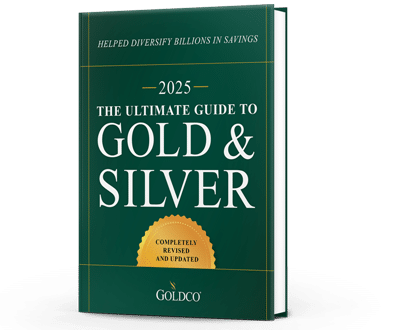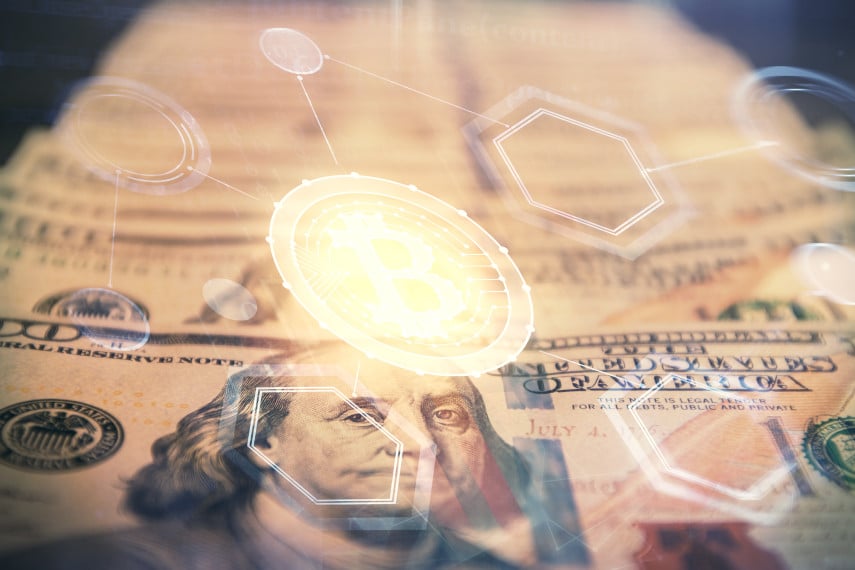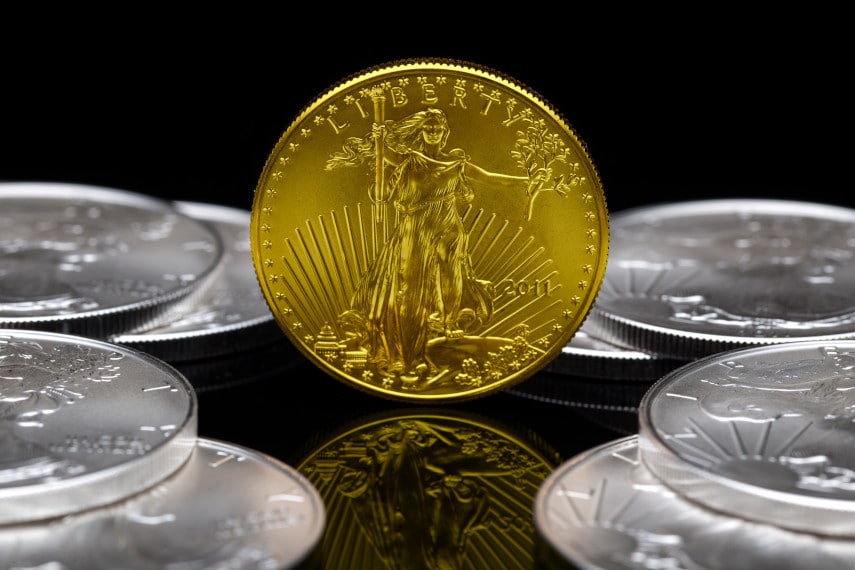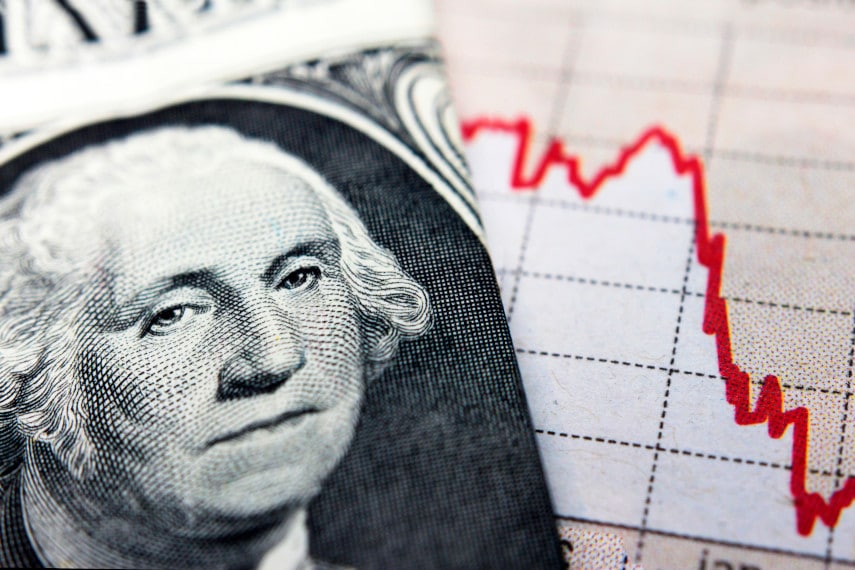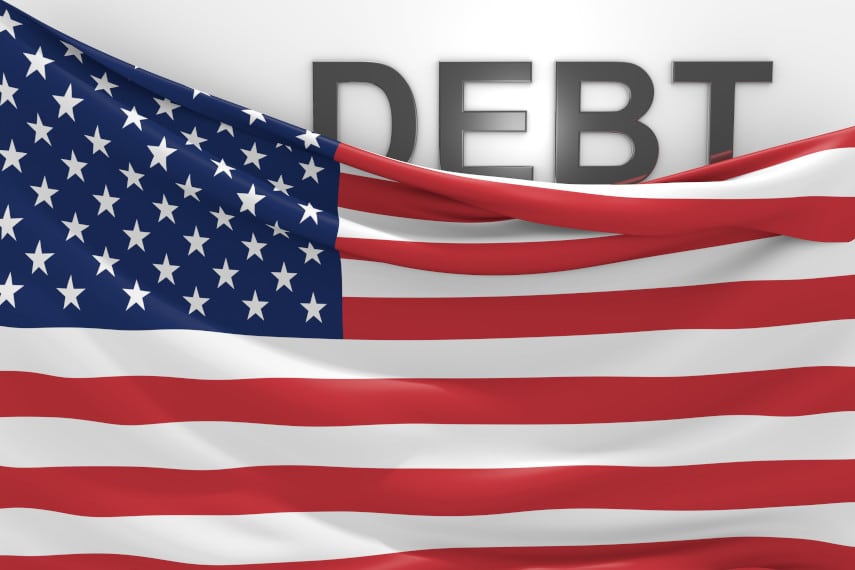
Rising inflation may be getting all the headlines today, but there’s a reason inflation is rising so high. The federal government is spending money at an unprecedented rate, and the Federal Reserve is creating trillions of dollars out of thin air to support that spending. All that money flooding the financial system is helping to drive up prices. But that spending does something else too – it drives up the national debt.
You know the national debt is bad when the Congressional Budget Office (CBO) has to update its budget outlook due to the huge amount of money that has been spent since its February report. And with many hundreds of billions of dollars of unscheduled spending still to come, CBO may have to issue a second update.
The implications of the rising national debt are severe. At over $28 trillion and counting, the national debt has risen tremendously over the past two years. And massive federal spending isn’t over yet. We still have to factor in the effects of a possible infrastructure spending bill, which could easily exceed $1 trillion when all is said and done.
With the national debt likely to climb even further in the coming years, American investors and taxpayers are going to face numerous negative consequences as a result of that climb in the national debt. Those who are nearing retirement are about to enter a brave new world not just as a result of being out of the workforce, but as a result of the United States entering an era of economic decline thanks to its rising debt. Those who don’t take the right steps to protect their wealth today may find that their money won’t go nearly as far in the future as they had expected.
CBO’s Debt Forecast
CBO is expecting the budget deficit to exceed $3 trillion for Fiscal Year 2021, the second consecutive year above $3 trillion. However, even the updated CBO budget outlook doesn’t take into account the possibility of a massive infrastructure plan passing, which could very well take place before August. So FY 2021 could end up going down in history as the largest budget deficit in US history and the largest in terms of percent of GDP since World War II.
CBO’s forecast goes on to predict a total of over $12 trillion in additional deficits over the next ten years. It’s incredible to think that the federal government is spending so many trillions of dollars. But what’s even more incredible is that CBO’s estimates are incredibly conservative compared to President Biden’s budget.
The White House expects over $14.5 trillion in deficit spending over the next decade, with at least a $1.8 trillion deficit in FY 2022. And given how no one’s budget forecasts ten years ago foresaw where we are today, with a national debt rapidly approaching $30 trillion, it’s safe to say that the increase in the national debt in the future could likely be far higher than anyone expects.
Debt Bomb About to Explode
Government debt is just one piece of the puzzle when it comes to the massive amount of debt circulating in our society. Corporate debt is up over 50% from its pre-2008 crisis levels, and household debt now exceeds the level it did before the financial crisis too. More and more debt is being issued, of lower and lower quality. At some point, something has to give.
When markets can no longer absorb all this debt, and central banks can no longer create new money to add more debt instruments to their already bloated balance sheets, the entire house of cards will come crashing down. And when this massive debt bubble does finally burst, it could make 2008 look like nothing at all.
The Consequences for Investors
The debt bubble collapsing could have severe consequences for investors, particularly for those close to retirement. Here are three of them that are worth keeping in mind.
1. Bond Market Collapse
Bond markets are supposed to be relatively stable, but a debt bubble bursting would upset that stability. The result of the current bubble collapsing could be catastrophic. Bond prices could plummet and yields could spike. For investors nearing retirement, especially those heeding the conventional wisdom to increase their investments in bonds as they near retirement, the drop in bond values could scuttle their dreams of a comfortable retirement.
2. Possible Hyperinflation
In the event of a severe bond market collapse, it could negatively impact the market for Treasury securities too. Higher yields could severely crimp the government’s ability to use deficit financing to cover its spending. That might force the Federal Reserve to step in and purchase government debt to keep federal operations afloat. And that could mean many trillions more dollars flooding the economy, driving up inflation even higher.
3. Risk of Default
The risk of all-out default can’t be understated either. The US government has defaulted in the past on some bond issues, but a general default has never occurred. However, a severe enough bond market crisis could result in a US government default if the government is unable to roll over its short term debt obligations.
Corporate defaults could occur too, which would wreak havoc on investors’ holdings. In some cases, investors could be lucky to get pennies on the dollar for their bond investments. So if your portfolio holds 50% bonds or more, you could see half your wealth wiped out.
Gold Can Protect You
It should be clear that we’re in the middle of a sea change when it comes to government spending and government deficits. We’re seeing a tsunami of spending and a flood of money creation, and because nothing too bad has happened yet, the temptation to continue spending in this way is too great to ignore. Don’t be surprised to see deficits in the coming years exceeding $2 trillion or even $3 trillion again, as fiscal caution gets thrown to the wind.
As the debt bubble continues to grow and the likelihood of a catastrophic bursting of the bubble increases, it is incumbent upon investors to start thinking about protecting their assets, if they haven’t already. Too many investors get complacent, thinking that just because it’s been over 90 years since the Great Depression started, there’s no chance of another one occurring in their lifetime.
Sure, you can roll the dice and hope you get lucky. But if you’re not lucky, and a depression occurs soon, or during the 20 or 30 years you may spend in retirement, you may find that your retirement savings will be insufficient to fund your desired standard of living.
That’s why many investors are turning to gold to help diversify their investment portfolios and safeguard their savings. Gold’s ability to maintain and gain value during times of crisis is well known. You may remember how the gold price skyrocketed to record highs during the aftermath of the 2008 crisis. Investors who had the good sense to invest in gold before the crisis not only saw their assets protected during the crisis, but also saw their portfolios recover value quicker after the crisis.
Investing in precious metals like gold doesn’t have to be difficult either. With a gold IRA, you can enjoy the benefits of investing in precious metals while still maintaining all the same tax advantages as a conventional IRA account. You can even roll over or transfer assets from existing retirement accounts into a gold IRA tax-free, allowing you to protect your existing retirement savings with an investment in physical gold coins or bars.
Don’t let your retirement savings explode along with the bursting debt bubble. Talk to the precious metals experts at Goldco today to learn more about how gold can help protect your wealth.

